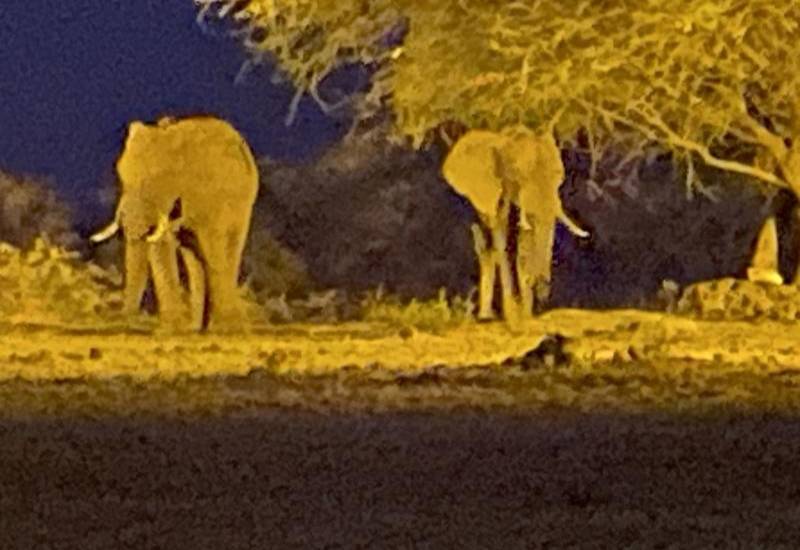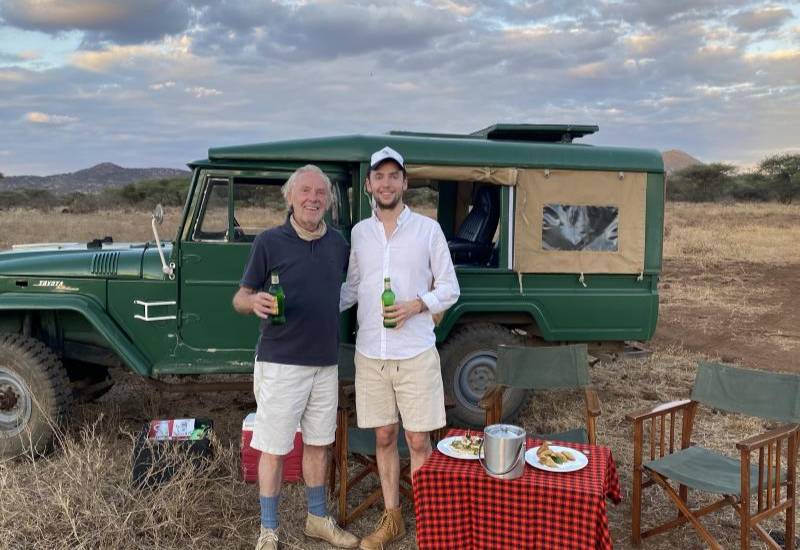
Even before you make the trip to Tsavo West National Park, one look at the map tells you that you’re not going to just another tourist destination – on one of those ‘safaris’ where you may see wildlife.
Getting to the Tsavo West, these days, is both easy and cheap!
For 490 bob on economy on the SGR train, you quickly drop off at the pristine Mtito Andei terminus.
In our case, we are picked up by one of those splendid open long Land Rover cruisers from Severin Safari Camp, driven (and tour guided) by a pleasant, chatty and knowledgeable fellow called Tolu.
A short drive across the road, and one is already at the KWS (Kenya Wildlife Service) gate, where the fee per day is just Sh500. Then it is time for the 52-kilometre drive south, through the Tsavo West national park, to our destination.
If one turned east after the Serena Kilanguni Lodge, where many a political decision has been made by the powers-that-be herding there in secrecy like buffaloes at a watering hole, they would go past the Roaring Rocks (named after the numerous loud lions in the area) and the Chimu Lava, until they ended up at Ngulia Lodge.
Straight east of that is the Man-eaters’ Signal Hill, said to be where lookouts were placed for the (then) man-eating lions of Tsavo, a story we will return to later in this piece.
Then one can go back West on the First World War Resupply track – yes, the Brits and Germans fought here over a century ago – that lies just north of the Tsavo river – until they get to the Kichwa Tembo Fort
There is a Rhino Valley with Observation Hill at its bottom, the Rhodesian Hill, Fort Mzima, and finally, the Mzima Springs at the east edge of Severin Safari Camp, that provide lots of watering holes for the animals with the astounding result that, at the Severin Safari Camp, as we will discover over the following four days of our sojourn, instead of chasing animals all day, the animals simply stroll over for water.
But I am putting the lion ahead of the zebra!
On the slightly over an hour leisurely drive to the luxury camp, the most exciting sight we come across is a male and female ostrich, protecting their brood of strolling ostrich chicks on one of the safari roads.
Otherwise, we also see zebras crossing the safari road, pardon the pun, elands, kundus, antelopes of all stripes, sullen buffalo and tall, graceful giraffes munching the treetops, that make one think of a tall, slim, elegant lady with high heels, chewing khat with bubble gum.
Severin Safari Camp is really a luxurious tented resort, complete with a spa and cool, infinity pool, right in the middle of nowhere in nature.
One can get fat and happy here, with their buffet breakfasts, three-course lunches and five-course a la carte dinners. The menu is never repeated twice during our four-day stay, which just tells you the range of their five-star chef, as Anthony takes guests on a tour of the site; and Erickson mans both the bar and the bonfire.
But the best thing about the restaurant is that it is near a major watering hole, thanks to Mzima Springs.

It is amazing to see a graze of zebras there at breakfast, see water eland leap from a crocodile scare right in the middle of the day, en route for lunch, and at night two elephants canoodle, after they have taken trunkfuls of water to slake their thirst, and maybe kept a full tank in their pachyderm bellies.
“The animals were always here,” says Severin Schulte, the warm and hospitable proprietor of the camp.
“We (humans) are the ones who have trespassed on their lands; so we must be very good guests ...”
And indeed, with Severin Camp totally unfenced, it is up to us to take due caution, especially at night – and not go wandering anywhere without one of the camp’s Maasais with their bright lanterns; lest a ‘kichwa tembo’ spots you in the dark, charges you, and one ends up with a sore ‘buffalo-gore’ bottom.
Tsavo (West) national park(s) has one of the richest histories of European missionary and explorer history, anywhere on the great continent of Africa.
The German missionaries Johann Ludwig Krapf and Johann Rebmann, who established themselves at Rabai near Mombasa often travelled into the interior to establish Christian mission stations, and went as far as Kitui in Ukambani, becoming the first Europeans to lay eyes on Mount Kilimanjaro.
They first reached the Tsavo on October 15, 1847!

The year after he left the American presidency, in 1909, Theodore Roosevelt headed a Smithsonian Institute funded ‘collecting’ expedition that spend ten months marching from Mombasa to Upper Nile.
They hunted and collected 164 species, something unthinkable today where poaching animals in our parks will get you shot on sight!
Going by train through the Tsavo, Theodore triumphantly wrote about the train ‘running over a hyena in the dusk, whose head the conductor later presented to us (as a grisly trophy).’
There is still a Patterson’s Camp in the Tsavo, in honour of Lt. Colonel J.H. Patterson, DSO, the man who killed the two main man-eating lions of the Tsavo that had delayed the ‘Lunatic Express’ (and who is starred in the Hollywood film, ‘The Ghost and the Darkness’).
Then there was Bror Blixen, aka the ‘Baron of the Bundu’ alias ‘Waboga’ (the Wild Goose) who, from 1913 until 1938, made the Tsavo West one of his best playgrounds in the wild for whites on ‘safaris.’
A big and heavyset man, Bror Blixen (from Sweden) was a woman magnet! Women from all over the world (in search of an African adventure) flocked to him, drawn by his hunter’s charisma, and charmed by his banter and sense of fun.
His brazen love affairs were legendary, even in a country like Kenya known for its ‘white mischief,’ and it was these scandalous indiscretions that eventually led Karen Blixen – the woman after whom the ‘Karen’ suburb in Nairobi is named – to divorce him in 1921, after nine years of being together in ‘Africa.’
 The Standard Group Plc is a multi-media organization with investments in media
platforms spanning newspaper print
operations, television, radio broadcasting, digital and online services. The
Standard Group is recognized as a
leading multi-media house in Kenya with a key influence in matters of national and
international interest.
The Standard Group Plc is a multi-media organization with investments in media
platforms spanning newspaper print
operations, television, radio broadcasting, digital and online services. The
Standard Group is recognized as a
leading multi-media house in Kenya with a key influence in matters of national and
international interest.



